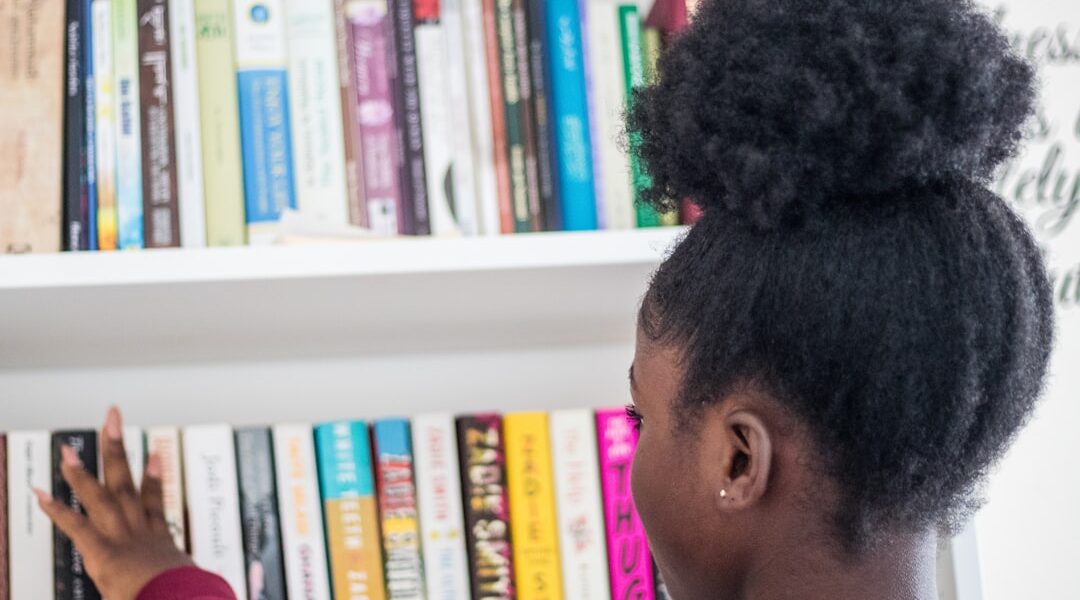Understanding your natural hair color is essential for embracing and enhancing it. Natural hair color is determined by the amount and type of melanin present in the hair shaft. Melanin is a pigment that provides color to hair, and it exists in two primary forms: eumelanin and pheomelanin.
Eumelanin is responsible for brown and black hair colors, while pheomelanin produces red and blonde hues. The specific combination and concentration of these pigments result in an individual’s unique natural hair color. Natural hair color is genetically determined and is a distinct characteristic of each person.
This genetic basis means that one’s natural hair color is an inherent part of their physical identity. Recognizing and appreciating one’s natural hair color can be seen as a form of self-acceptance and can contribute to a positive self-image. Embracing natural hair color allows individuals to appreciate their unique physical attributes and can be considered a way of celebrating personal identity.
Key Takeaways
- Your natural hair color is determined by genetics and can range from blonde to black, with variations in undertones.
- Embracing your natural hair color can boost confidence and promote self-acceptance.
- Enhance your natural hair color with techniques like balayage or highlights to add dimension and depth.
- Consider your skin tone when choosing a natural hair color to complement and enhance your overall look.
- Maintain your natural hair color by using sulfate-free shampoos, deep conditioning treatments, and protecting it from sun damage.
Embracing Your Natural Hair Color
Letting Go of Societal Beauty Standards
Embracing your natural hair color can be a liberating experience, as it allows you to break free from the constraints of societal beauty standards and celebrate your individuality.
Nurturing Your Hair’s Health and Vitality
One way to embrace your natural hair color is to focus on its health and vitality. This involves using products tailored to your hair type and texture, as well as following a regular hair care routine. By doing so, you can enhance your hair’s natural shine and vibrancy, allowing it to truly radiate.
Experimenting with Hairstyles and Haircuts
Another way to embrace your natural hair color is to experiment with different hairstyles and haircuts that complement your natural color. Whether you have dark brown, red, blonde, or black hair, there are countless ways to style and wear your natural hair color with confidence and pride.
Enhancing Your Natural Hair Color

While embracing your natural hair color is important, there are also ways to enhance it if you so choose. Enhancing your natural hair color can be a fun way to play with different shades and tones, while still staying true to your roots. One way to enhance your natural hair color is by adding subtle highlights or lowlights.
This can add dimension and depth to your hair, while still maintaining the overall integrity of your natural color. For example, if you have dark brown hair, adding caramel or honey highlights can create a beautiful sun-kissed effect. Another way to enhance your natural hair color is by using color-enhancing shampoos and conditioners.
These products are designed to bring out the natural tones in your hair, whether it’s adding warmth to red hair or enhancing the richness of dark brown or black hair. Finally, if you’re looking for a more dramatic change, you can consider dyeing your hair a slightly different shade within the same color family. For example, if you have light brown hair, you might consider going for a darker chocolate brown or a warmer chestnut shade.
Natural Hair Color Options for Different Skin Tones
| Skin Tone | Natural Hair Color Options |
|---|---|
| Fair | Blonde, Light Brown, Red |
| Light to Medium | Light Brown, Medium Brown, Auburn |
| Medium to Olive | Dark Brown, Chestnut, Caramel |
| Deep | Black, Espresso, Mahogany |
When it comes to choosing a natural hair color that complements your skin tone, it’s important to consider both the undertones of your skin as well as your personal style preferences. For those with warm undertones, such as golden or olive skin, natural hair colors like caramel, honey blonde, or warm brown shades can be flattering. These colors can bring out the warmth in your skin and create a harmonious overall look.
On the other hand, if you have cool undertones, such as pink or blue undertones in your skin, natural hair colors like ash blonde, cool brown, or even black can be stunning choices. These cooler tones can complement the coolness in your skin and create a striking contrast. It’s also important to consider your personal style and preferences when choosing a natural hair color.
If you prefer a more natural look, sticking to shades that are close to your natural hair color can be a great option. However, if you’re feeling more adventurous, experimenting with bolder shades like reds or deep browns can also be a fun way to express yourself through your hair color.
Tips for Maintaining Your Natural Hair Color
Maintaining your natural hair color is essential for keeping it looking vibrant and healthy. One of the most important tips for maintaining your natural hair color is using products specifically designed for colored hair. This includes shampoos and conditioners that are formulated to protect and nourish colored hair, as well as treatments like color-depositing masks or glosses to refresh and revive your natural color.
Another tip for maintaining your natural hair color is protecting it from environmental damage. This means using heat protectant products before using hot tools like flat irons or curling wands, as well as wearing hats or scarves to shield your hair from the sun’s UV rays. In addition to using the right products and protecting your hair from damage, it’s also important to schedule regular touch-ups with a professional colorist.
This can help keep your natural hair color looking fresh and vibrant, while also allowing you to address any potential issues like roots or fading.
Transitioning to Natural Hair Color

Gradual Trimming for a Seamless Transition
If you’ve been dyeing your hair for years and are ready to embrace your natural hair color, transitioning can be a gradual process. One way to transition to your natural hair color is by getting regular trims to gradually remove any remaining dyed ends. This can help blend the transition between your natural color and any previously dyed sections.
Fading to Natural with Semi-Permanent Dyes
Another option for transitioning to natural hair color is using semi-permanent or demi-permanent dyes that gradually fade over time. This can help soften the contrast between your natural color and any previously dyed sections, allowing for a more seamless transition.
Patience and Hair Care During Transition
It’s also important to be patient during the transition process, as it can take time for your natural color to fully come through. Using deep conditioning treatments can help keep your hair healthy and strong during this time, while also promoting the growth of new, healthy strands.
Natural Hair Color Trends and Inspirations
When it comes to natural hair color trends, there are always new and exciting options to consider. One trend that has been gaining popularity is the “bronde” trend, which combines brown and blonde tones for a beautiful sun-kissed effect. This versatile shade can work for a wide range of skin tones and is a great option for those looking for a low-maintenance yet stylish look.
Another trend that has been making waves is the resurgence of rich, vibrant reds. From deep burgundy shades to fiery copper tones, red hair has been making a comeback in a big way. These bold hues can add a pop of personality to any look and are a great option for those looking to make a statement with their natural hair color.
Inspirations for natural hair color can come from anywhere – from nature to fashion to art. Whether you’re inspired by the changing leaves in autumn or the latest runway trends, there are countless sources of inspiration for finding the perfect natural hair color for you. In conclusion, understanding, embracing, and enhancing your natural hair color is all about celebrating the unique beauty of your own individuality.
Whether you choose to maintain your natural color or experiment with different shades, the most important thing is feeling confident and comfortable in your own skin – and that includes embracing the beauty of your natural hair color.
If you’re looking for more information on natural hair color options, be sure to check out this article on Hello Prose Hair’s website. They offer a range of natural hair color products and tips for achieving the perfect shade. Hello Prose Hair is a great resource for anyone looking to embrace their natural hair color.
FAQs
What are the natural hair color options?
Natural hair color options include black, brown, blonde, red, and gray. These colors are determined by the amount and type of melanin in the hair.
What factors determine natural hair color?
Genetics play a significant role in determining natural hair color. The amount and type of melanin produced by the hair follicles also influence hair color.
Can natural hair color change over time?
Yes, natural hair color can change over time due to factors such as aging, hormonal changes, and environmental influences. This can result in graying or lightening of the hair.
Are there natural ways to enhance or change hair color?
There are natural methods, such as using henna or herbal dyes, to enhance or change hair color. These methods are often preferred by individuals seeking natural alternatives to chemical hair dyes.
How can one maintain their natural hair color?
Maintaining natural hair color involves protecting the hair from sun damage, using gentle hair care products, and maintaining a healthy diet to support overall hair health. Additionally, avoiding excessive heat styling and chemical treatments can help preserve natural hair color.




